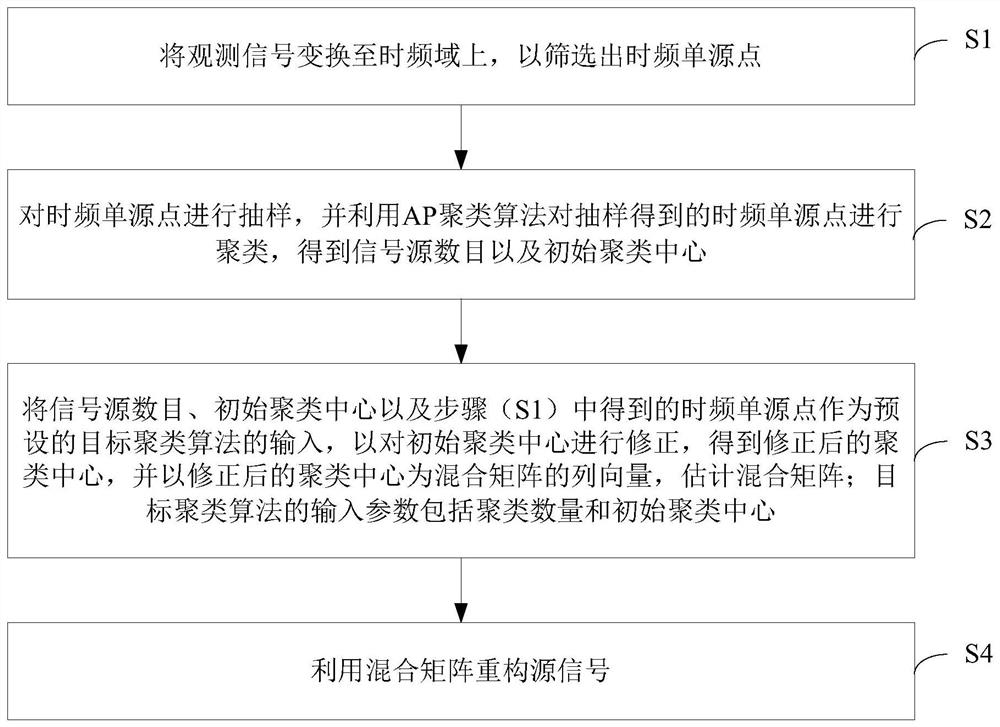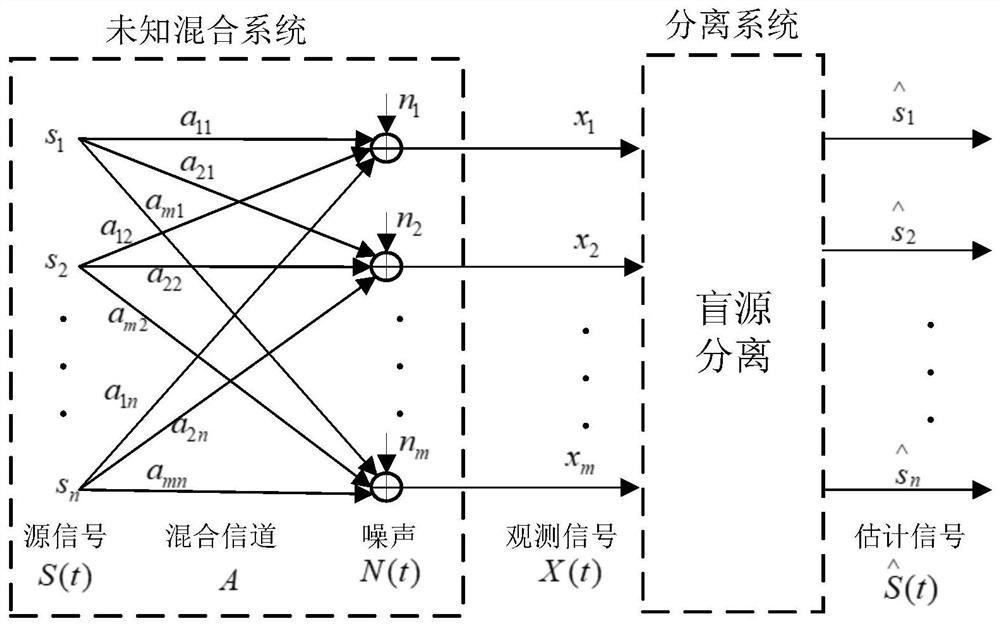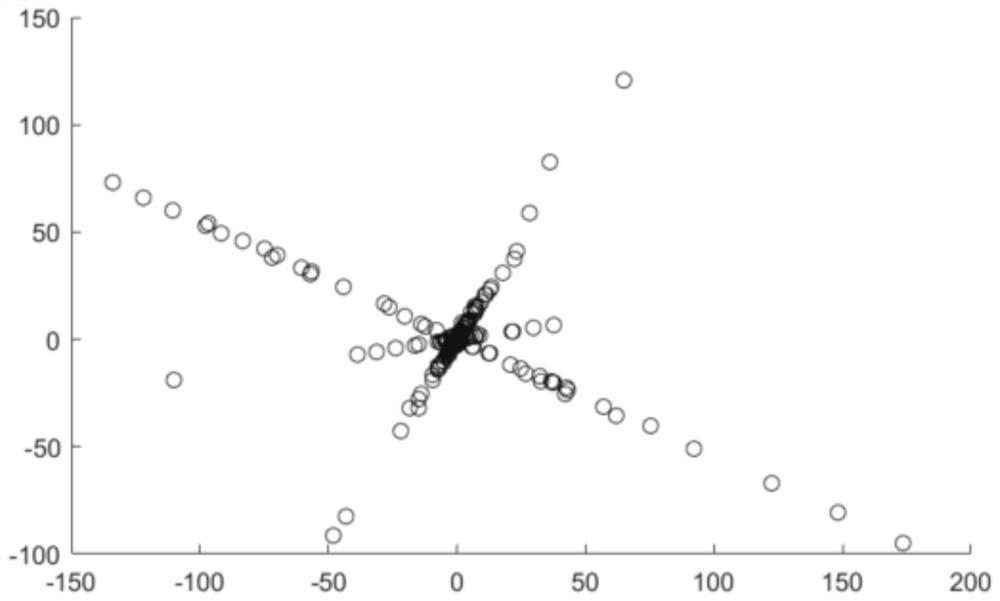Underdetermined blind source separation method based on AP clustering
An underdetermined blind source separation and AP clustering technology, which is applied in the field of underdetermined blind source separation based on AP clustering, can solve the problems of poor source signal separation and low precision of the mixing matrix, achieve good aggregation characteristics, and reduce complexity performance, and the effect of improving accuracy
- Summary
- Abstract
- Description
- Claims
- Application Information
AI Technical Summary
Problems solved by technology
Method used
Image
Examples
Embodiment 1
[0044] A method for underdetermined blind source separation based on AP clustering, such as figure 1 shown, including the following steps:
[0045](S1) Transform the observed signal to the time-frequency domain to screen out time-frequency single source points;
[0046] Without loss of generality, in this embodiment, the source signal is a voice signal;
[0047] The linear instantaneous mixing process of source signals in an underdetermined blind source system is as follows: figure 2 As shown, based on this, in the case of ignoring the noise signal, the mathematical model of the underdetermined blind source separation system can be established as follows:
[0048]
[0049] Among them, X(t) represents the observed signal, A represents the mixing matrix, and S(t) represents the source signal;
[0050] The observed signal has good sparsity in the time-frequency domain; the time-frequency single source point, that is, the time-frequency point where only one source signal ex...
Embodiment 2
[0092] A computer-readable storage medium, including a stored computer program. When the computer program is executed by a processor, the device where the computer-readable storage medium is located is controlled to execute the method for underdetermined blind source separation based on AP clustering provided in Embodiment 1 above.
PUM
 Login to View More
Login to View More Abstract
Description
Claims
Application Information
 Login to View More
Login to View More - R&D
- Intellectual Property
- Life Sciences
- Materials
- Tech Scout
- Unparalleled Data Quality
- Higher Quality Content
- 60% Fewer Hallucinations
Browse by: Latest US Patents, China's latest patents, Technical Efficacy Thesaurus, Application Domain, Technology Topic, Popular Technical Reports.
© 2025 PatSnap. All rights reserved.Legal|Privacy policy|Modern Slavery Act Transparency Statement|Sitemap|About US| Contact US: help@patsnap.com



